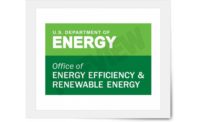Ingersoll Rand announced it will commit to the Clean Energy Ministerial (CEM) Advanced Cooling Challenge (ACC). The commitment includes a $500 million investment in product-related research and development by 2020 to fund the long-term reduction of greenhouse gas emissions (GHG) through its transport refrigeration and HVAC solutions.
“We believe in the mission to provide high-efficiency, climate-friendly, and accessible cooling products to markets around the world,” said Dave Regnery, president of Ingersoll Rand’s Commercial HVAC business for North America, Europe, Middle East, and Africa. “Nearly half of the world’s energy is used in industrial, commercial, and residential buildings, with the HVAC and lighting systems being the greatest opportunity for improvement. We believe Ingersoll Rand can make a difference by helping building owners address this critical issue.”
Ingersoll Rand also committed to reducing GHG emissions from its operations by 35% by 2020. The company said a central strategy for achieving these targets is applying energy services and building automation systems from its Trane Building Advantage brand to improve the efficiency of their own facilities with high-efficiency, smart, and climate friendly building energy management systems and Trane cooling equipment.
The ACC was designed to urge governments, companies, and other stakeholders to make, sell, or install super-efficient air conditioner or cooling solutions that are smart, climate-friendly, and affordable. The challenge was created as a call to action, recognizing that access to cooling improves health, productivity, economic growth, and education.
The ACC commitments made by Ingersoll Rand aligns with the company’s climate commitment. The commitment is designed to reduce GHG emissions from products and operations by 2030. The Ingersoll Rand Climate Commitment pledges to:
• Cut the refrigerant GHG footprint of its products by 50% by 2020 and incorporate lower-global warming potential alternatives across its portfolio by 2030
• Invest $500 million in product-related research and development by 2020 to fund the long-term reduction of GHG emissions
• Reduce company operations-related GHG emissions by 35% by 2020.
To date, the company claims its Climate Commitment has supported the avoidance of approximately 2 million metric tons of CO2e globally, which is the equivalent of avoiding annual CO2 emissions from energy used in more than 270,000 homes or more than 2.1 billion pounds of coal burned. By 2030, the company expects to reduce its carbon footprint by 50 million metric tons.






